Shell gold – gold mixed with gum Arabic to make a paint (like watercolour) – has been used by illuminators both in the Western world and the East over many centuries. It works best when applied to a very smooth surface in relatively small areas and can be burnished to a high shine, a finish unmatched by acrylic gold paints and inks.
It can be bought pre-prepared. However, in my experience it is always too coarsely ground for fine detail work. Making your own is not difficult – here is the process I use.
Spread a thin layer of honey on a plate
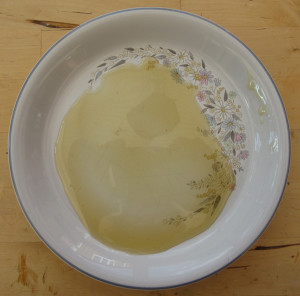
Add gold, one leaf at a time and rub into the honey until it is broken up into tiny particles
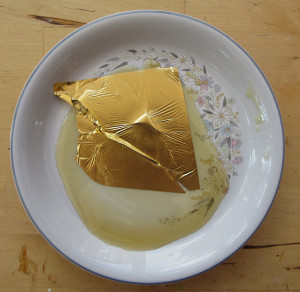
Once all the leaves are worked into the honey the mixture is ground hard for a couple of hours, using the side of the hand. It’s a sticky business and it makes your hand ache, but the beauty of the final product is definitely worth the effort and inconvenience.
When the gold is fine enough, you simply add hot water to dissolve the honey. Let the gold particles sink, then carefully pour off the honey bearing water. This step should be repeated several times, the gold eddying and swirling in the water.
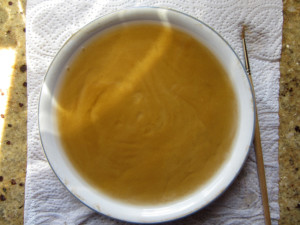
The gold can then be transferred to a smaller container (traditionally a shell). It needs just a small drop of gum Arabic to make it into a paint .
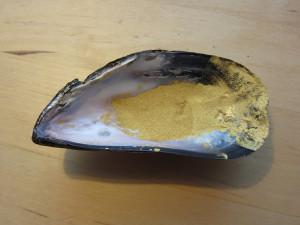
I used my newly prepared shell gold to gild this ‘S’ in the form of a serpent, originally found in Lincoln Cathedral’s twelfth century MS 174, f.154.
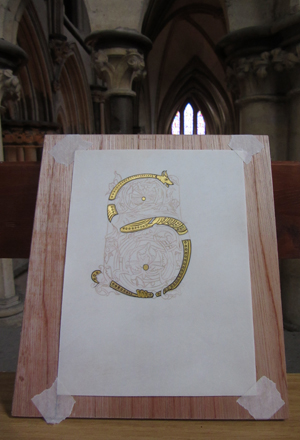
I’m often asked how long it takes me to create an illuminated letter. Well, to draw the image on this piece of Kelmscott vellum, gild, burnish and add detailing in oak gall ink took me nine hours. I’ll post images of the completed piece, plus some photos of the original manuscript next time.
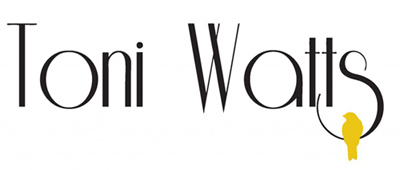
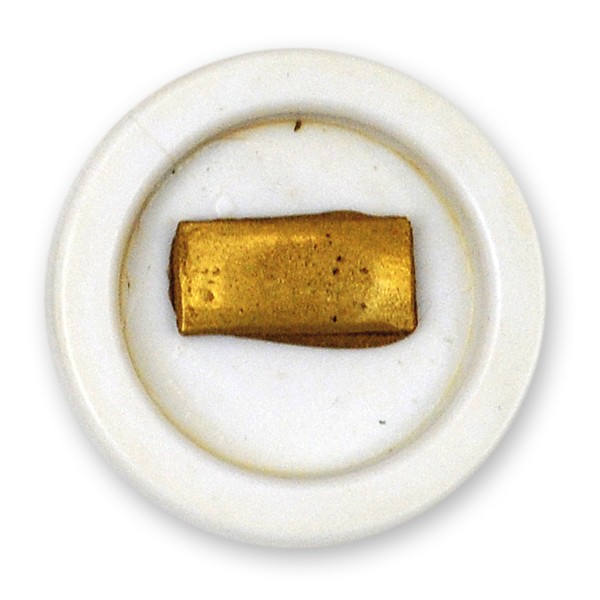
An interesting article Toni, and I look forward to seeing the finished piece.
I was making Rabbit Skin Glue gesso yesterday…..and thought of you!
All the best.
I think of you whenever the sun is blazing down on the studio and I’m trying to gild! Thank goodness autumn is here!